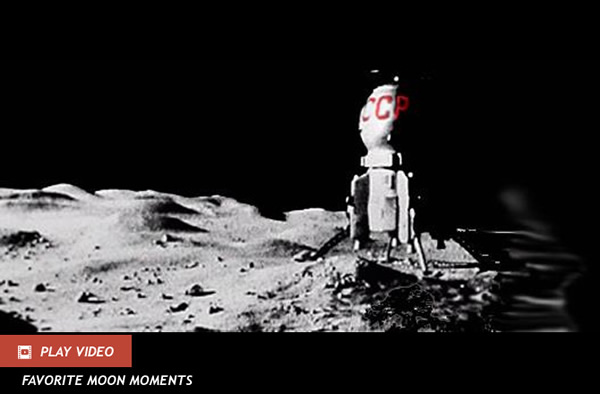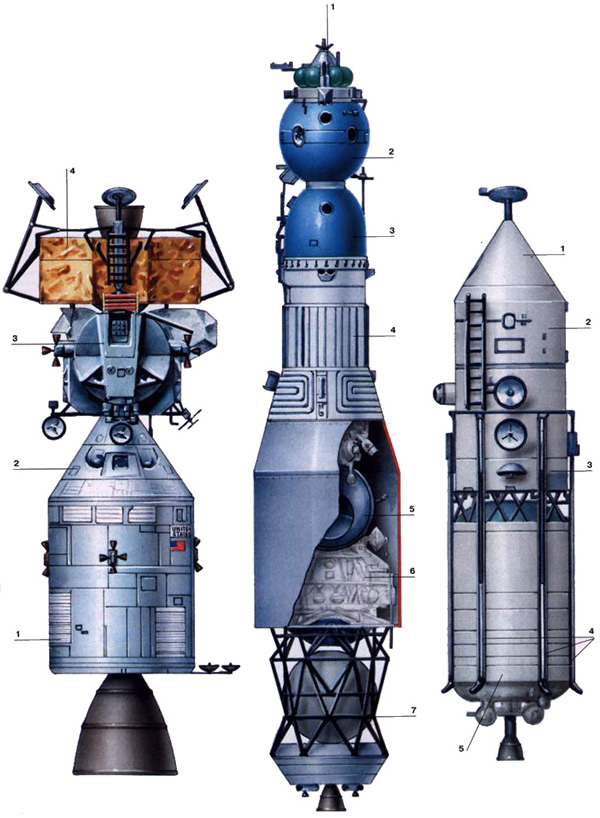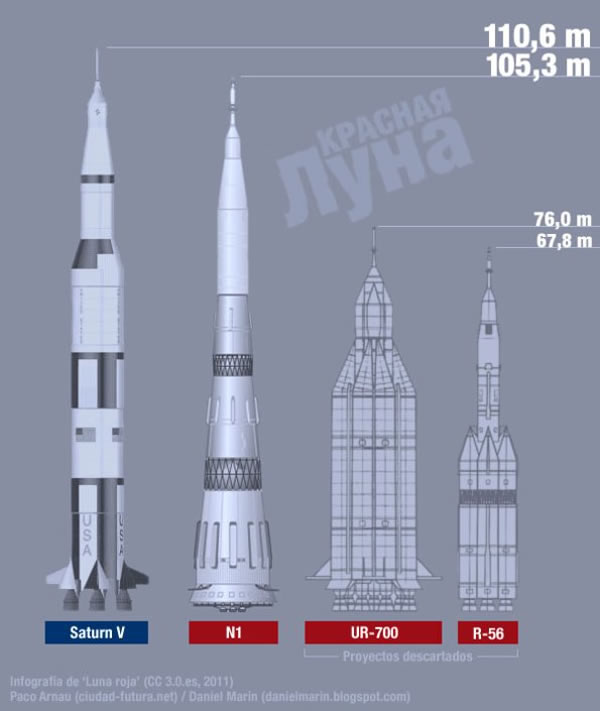What Would a Soviet Moon Landing Have Looked Like?
What Would a Soviet Moon Landing Have Looked Like?
With the passing of Neil Armstrong last year, this 44th anniversary of the Apollo 11 moon landing may seem even more remote in time. That said, the United States will be remembered for millennia to come for pulling off such a technological triumph — just as we equate the Egyptian civilization with the pyramids.
Unlike the pyramids, however, the US was motivated to do seemingly impossible things by being in a race with another superpower — the Soviet Union. What if the Russians had beaten the US to the moon? How would this have unfolded to viewers across the world?
My alternative history scenario is based on real plans the Soviets were perusing for racing us to the moon, but my prognostication for US politics is largely imaginary.
My script starts with Lee Harvey Oswald being arrested on a Dallas, Texas street corner for disorderly conduct in an anti-American demonstration. He’s locked up just days before his planned assassination of President John F. Kennedy.
Though Kennedy lives, his popularly among voters is dying. In late 1963 it’s only at 35 percent. Kennedy loses southern states, the plains and mountain states in the 1964 presidential campaign. Conservative Republican candidate Barry Goldwater wins a close election.
One of Goldwater’s first actions is to scale back NASA’s civilian space program and divert the money to a large-scale antiballistic missile system. The moon landing (Democrat Kennedy’s idea) is pushed off into the 1970s. Forget about Kennedy’s “on the moon by the end of the decade” pledge made in 1962.
The USSR space program, poisoned by politics and infighting, still rolls forward despite a late start by not committing to a moon mission until 1964. The slowing of the U.S. moon program has bought them much-needed time.
One plan considered was to send a large vehicle, called LK-700, to land a two-man cosmonaut team directly on the moon. This sidesteps the risky business of having two separate vehicles — a command module and lunar module (LM) that would have to rendezvous in lunar orbit. The U.S. abandons the directed lading approach in favor of lunar orbit rendezvous.
The 150-ton LK-700 is more massive that the Apollo/LM stack and would have used three powerful engines arranged in a cluster for lunar transit. After these engines are ejected, a fourth engine would steer the LK-700 to the moon. A fifth engine would bring the craft to a soft landing on the Sea of Fertility near the moon’ eastern limb. The direct landing approach gives the Soviets the flexibility to land anywhere on the moon’s nearside. After a 24-hour stay the cosmonauts would liftoff and head straight back home.
This can’t be done without the development of one of the largest rockets ever conceived, the UR-700 is a scaled-up design of Soviet launchers that are efficient at lofting big payloads. But it never leaves the drafting table. Instead, the Soviets decide to build the N1 booster, a close cousin to the America Saturn V moon rocket, but with significantly greater payload capacity.
The explosion of the N1 rocket in January 1969, and subsequent launch failures, set back the Soviet timetable. But the Russians have time to recover. Following the Apollo 1 launch pad fire in January 1967 that kills three astronauts, the Goldwater administration puts a long hiatus on NASA’s moon schedule. The Apollo capsule undergoes a major redesign. The risky lunar orbit rendezvous strategy is reviewed from the ground up at the White House’s insistence.
Meanwhile the Soviets re-engineer the N-1 and finally have a successful launch. The payload to the moon is reduced to half the weight of the Apollo/LM stack. The manned vehicle is a Soyuz “mothership” docked to a claustrophobic one-man lunar lander that looks like a comparative HO-scale model of the American LM.
In the fall of 1968 Kennedy’s former Vice President, Lyndon B. Johnson, defeats Goldwater in the presidential election by leveraging a southern states strategy. The Democratic party is not weakened and radicalized by the Vietnam War, which was Goldwater’s headache for four years. (Goldwater’s use of low-yield nuclear devices to clear Viet Cong supply routes has spooked American voters.)
Eager to seen federal funds flowing to NASA centers in Florida, Alabama, Mississippi, and Texas, Johnson re-boots the flailing Apollo program.
But it’s too late. In the summer of 1972 veteran cosmonauts Alexi Leonov and Oleg Makarov triumphantly rocket moonward with the Soyuz/lander already mated before launch (the Apollo plan was to do this on the way to the moon). Several days later they enter a circular lunar orbit. In preparation for landing the orbit is modified so that the vehicle pair briefly skirt within 10 miles of the lunar surface.
The Soyuz capsule is depressurized and Leonov spacewalks along handholds to climb into the docked lander. He descends on retrorockets to a mile above the cratered surface. The rocket engine is jettisoned and Leonov has just one minute to use the lander’s remaining engine to make a soft landing. He needs the use the same engine and therefore save enough fuel to get back off the lunar surface!
This is the loneliest experience a human has ever had. He’s 250,000 miles from Earth crammed inside a phone booth size cockpit plummeting toward a primeval landscape untouched for billions of years.
Stepping off the lander, and before 1 billion TV viewers (assuming the Soviets bring along a TV camera) Leonov says something like: “. . .one giant leap for Socialism” (just kidding).
After a four-hour moon walk to collect rock and soil samples, and leave behind a telerobotic mini-rover, Leonov blasts back off to rendezvous with the Soyuz. There’s no time for sleep when you are the only man on the moon!
The blood-red flag of the USSR, emblazoned with the infamous hammer & sickle, remains a silent sentinel at the landing site for countless centuries to come.
Americans are glum at losing the Space Race. But there’s still the challenge of putting the first human on Mars…
Image credit: Aleksei Fedorchenko, epizodsspace(Jul 22, 2013 12:30 PM ET // by Ray Villard)














